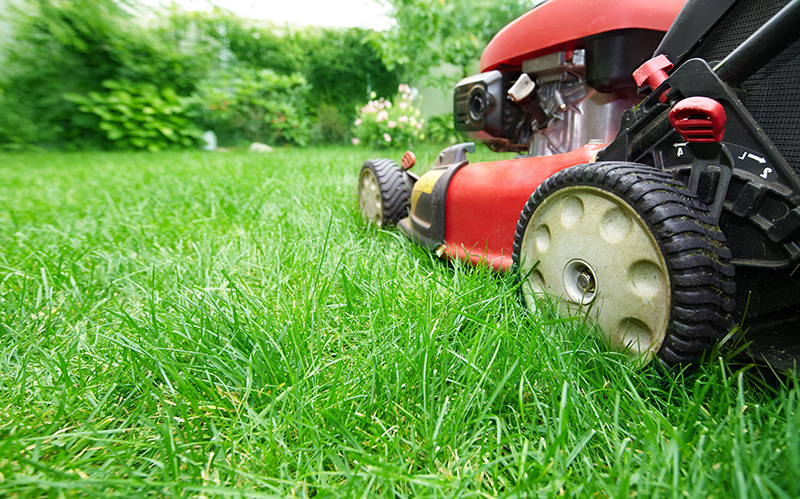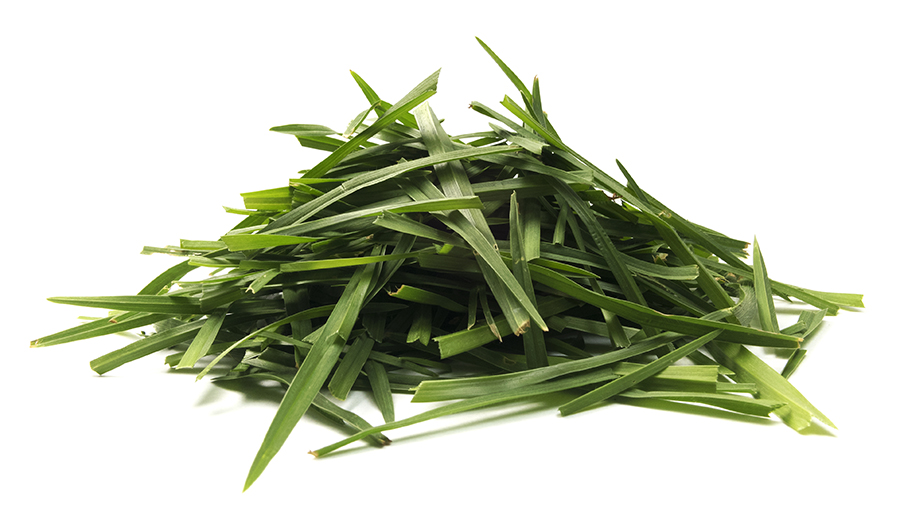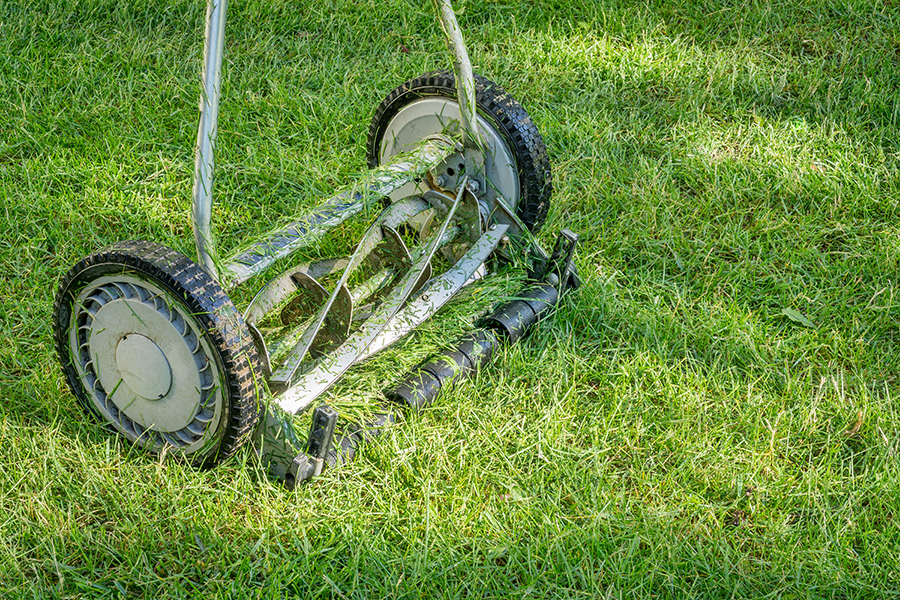Mowing
Follow the mowing tips below for a healthy lawn, and check out our short video on best mowing practices.
Tip #1:
Adjust your mower height so it never cuts your grass shorter than about 3 or 4 inches for ideal conditions.
Tip #2:
When mowing, never cut off more than one third of the grass at a time.
Mow High
If you cut your grass below 2 inches or less, the grass will draw energy from its root reserves to grow, instead of drawing energy from the sun. Keeping grass tall during the summer also helps the plants tolerate the heat and dry weather, rather than requiring more water.
 Photo by Kurhan, 123RF
Photo by Kurhan, 123RFTip #3:
Leave all grass clippings on the lawn after mowing.
Leave every last grass blade on the lawn
Don’t even think about bagging up or composting lawn clippings -- your grass wants them back!
Grass clippings can return 50-100% of the nitrogen your lawn needs, and are free fertilizer. Leaving grass clippings produces short grass particles that fall to the soil surface and quickly break down. The result: the release of valuable nutrients that fertilize the lawn, add organic matter that conserves moisture, and protect against temperature extremes.
Leaving grass clippings eliminates the need to use commercial fertilizers and reduces the amount of yard trim materials that must be collected and processed by the County. Here in Montgomery County we collect 23,000 tons of grass clippings at our compost facility each year, and we still can’t figure out why anyone would want to rake up, bag, and give us all that free nitrogen!
 Image by Jesus Jauregui, 123RF
Image by Jesus Jauregui, 123RFIf you are concerned about the appearance of lawn clippings, use a mulching mower, which will chop them into fine bits. It will also boost your soil microbes—bacteria will break down the cut up lawn clippings quickly.
Tip #4:
Control excess thatch with compost tea or aeration.
Beware the “Dethatching” myth
Thatch is the brown material that gathers at the base of the grass, and is produced by surface roots that naturally die. It is not a build-up of lawn clippings.
A healthy microbial population will usually eat up and decay thatch, but it can accumulate too heavily in unhealthy or chemical based lawns. Many conventional lawn care manuals tell you to rake up this thatch, but that only causes damage. A few applications of compost tea will clear up thatch, as will core aeration , or applications of blackstrap molasses, which will boost the bacteria that eat thatch as food.
Selecting a Lawn Mower
Did you know that in the U.S. we use approximately 1.2 billion gallons of gas ( DOE) running lawn mowers each year? And that we also spill up to 17 million gallons of gas refueling them each year? That’s 50% more than was spilled by the Exxon Valdez!
In 2011, 24%−45% of all non-road gasoline emissions were from gas powered lawn and garden equipment ( EPA). These emissions contribute to climate change, and are ground level pollutants that contribute to heart attacks, cancer, asthma, and developmental and neurological disorders. Not to mention the other hassles of gas mowers: noise, oil changes, draining gas in the winter, storing gas safely, and many additional trips to purchase fuel.
Tip #5:
Choose a Green Mower
Mulching mowers: A mulching blade has bent blade angles to help chop up grass and leaves into smaller pieces within the mowing deck and drops the small cuttings below the mower. You can buy a mulching kit and adapt a regular mower, or making multiple passes with a regular mower to chop grass smaller, but a mulching mower will do a better job because of the shape of the mowing deck.
Electric mowers: They are quiet, better for air quality, and you’ll never have trips to the gas station. Opt for a mower with a cord, because it requires no battery, is usually less expensive, and will last longer. There are also electric ride-on mowers for commercial operations or very large properties. The upfront cost of an electric mower can be higher than a gas mower, but keep in mind the time and cost to refuel, and change the oil, filters, and spark plugs on a gas mower.
Reuse an old mower: Opting for a second-hand mower prolongs the useful life of the mower and costs a lot less upfront. Get a tune up to make sure it’s good to go and running well. But only accept used 4-cycled engines and don’t use old 2-cycle engine mowers: they emit up to 10 times the amount of emissions compared to a modern car, and you’ll breathe these pollutants in as you mow.
Lawn Mower Maintenance
Tip #6:
Maintain Your Lawn Mower
Keep your mower clean by removing any buildup of grass clippings under the mower deck before they dry out. Store your mower in a clean, dry location and empty the gas tank before winter storage, or add fuel stabilizers.
Follow manufacturer directions on electric mowers for charging and battery care.
Lawn Maintenance Tips
Tip #7:
Buy extra blades for your mower and keep them sharp!
You want to sharpen a mower blade after every 10-12 hours of use. Have extra blades on hand to change out the dull ones, and save trips to the hardware store or lawn mower repair shop by sharpening as many blades as possible at once.
With the right tools and safety equipment, you can also sharpen mower blades at home.How to Sharpen Your Mower Blades
Mowing for small lawns
A push reel mower requires only human power and is also fully recyclable in the metal pile. Reel mowers also cut like scissors, and if kept sharp make a nice, clean cut. The downside: most reel mowers won’t cut grass over 2” and just push it over; lawns in cooler regions should be grown longer, and only a few reel mowers will cut grass over 3” tall, so shop carefully.
An electric powered string trimmer can quickly trim a small space and won’t require sharpening blades. Just be careful not to cut the lawn too short. Robotic mowers are also on the market now—consider them if you can keep the lawn free of toys, pine cones, and other objects.
 Image by pixelsaway, 123RF
Image by pixelsaway, 123RF